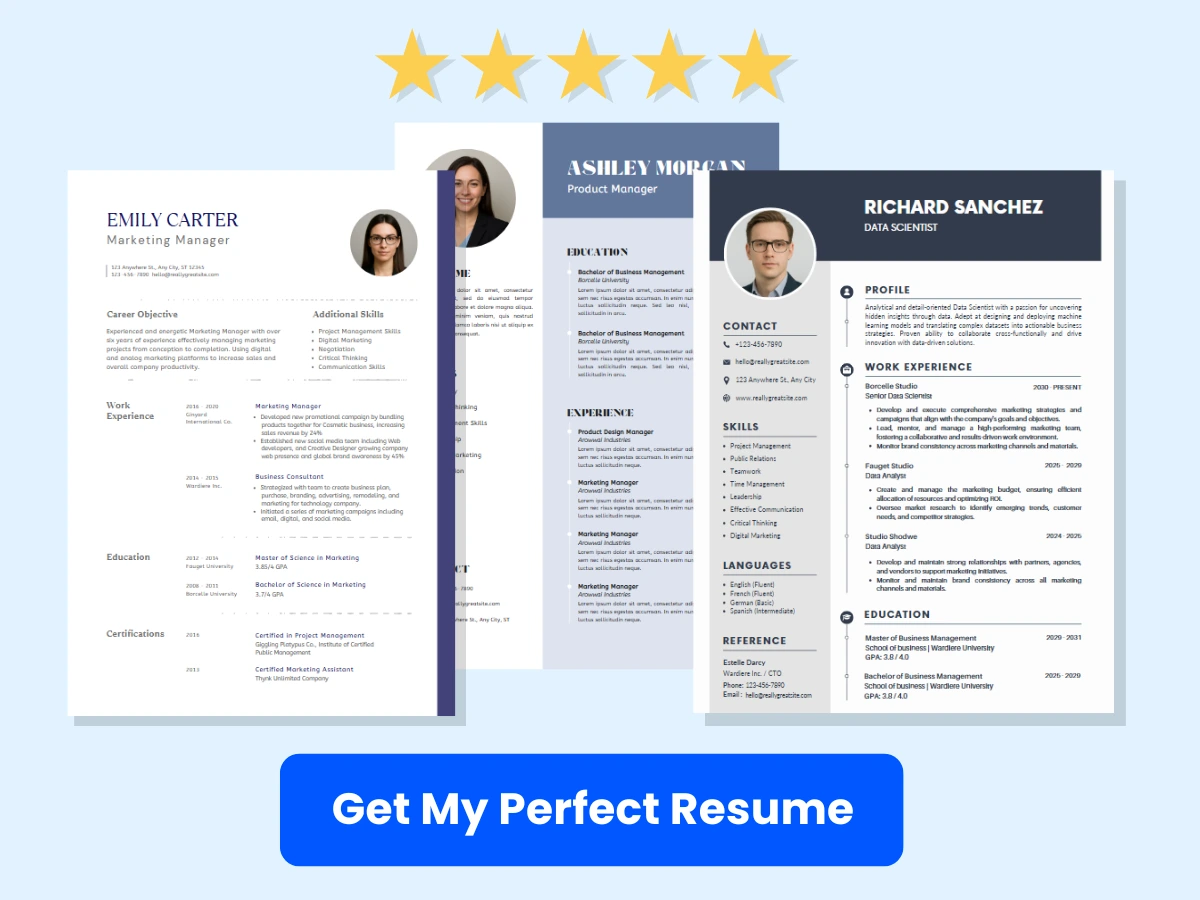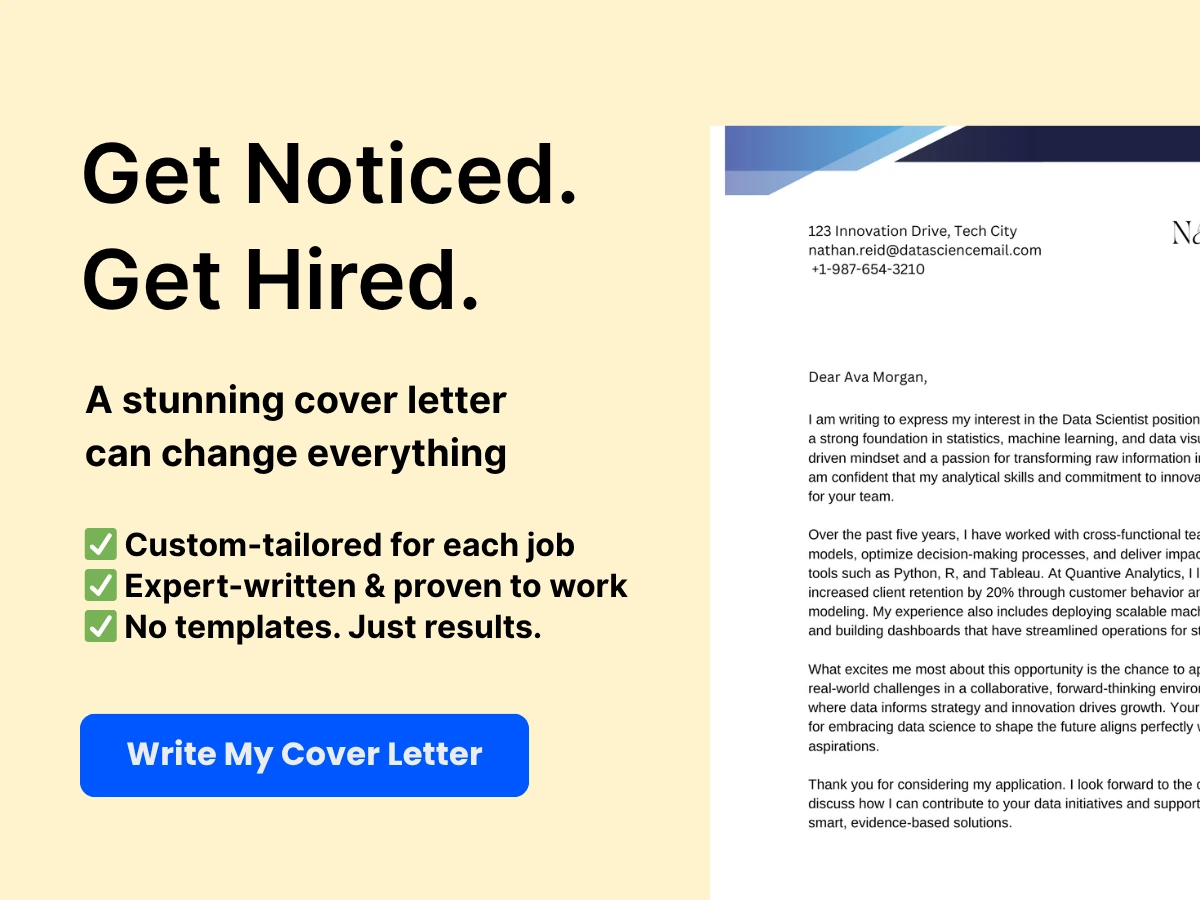In today’s competitive job market, having a solid career portfolio is no longer optional—it’s a necessity. A career portfolio is an organized collection of evidence that showcases your professional skills, accomplishments, and qualifications.
But what exactly is a career portfolio? A career portfolio can include a variety of items such as a resume, cover letters, reference letters, certifications, awards, and sample work. It is a visual representation of your career that goes beyond a simple resume to demonstrate to potential employers the depth and breadth of your experience.
So why is having a career portfolio so important? For starters, a career portfolio can help you stand out in the job market by showcasing your unique set of skills and accomplishments. It can also help you prepare for job interviews by giving you a comprehensive understanding of your own strengths and weaknesses. Additionally, a career portfolio can help you stay organized and focused on your career goals.
This article will provide you with a step-by-step guide on how to create a career portfolio that will help you stand out from other job applicants. Throughout the article, we will cover the following topics:
- Gathering materials for your career portfolio
- Choosing the right format for your career portfolio
- How to structure your career portfolio
- Tips for presenting your career portfolio
- Updating your career portfolio
By the end of this article, you will have a comprehensive understanding of what goes into creating a career portfolio, how to present it effectively, and how to keep it up to date.


Investing time in creating a career portfolio is an investment in your career. Not only will it help you land your dream job, but it will also help you stay focused on your professional goals and set you up for long-term success. So, let’s get started on creating your own career portfolio.
Step 1: Identify Your Goals and Target Audience
As you embark on the journey to create a career portfolio, the first step is to identify your goals and target audience. This is essential because it sets the tone for the entire portfolio creation process.
Importance of Setting Clear Career Goals
The first step in identifying your goals is to have a clear understanding of what you want to achieve professionally. Setting career goals allows you to focus on what you really want and how you can achieve it. Without clear career goals, you may find yourself wandering aimlessly without a clear direction or purpose.
When setting career goals, it is important to consider your long-term aspirations and map out a feasible path to achieving them. Make sure your career goals are ambitious yet attainable, and most importantly, align with your skills, interests, and values.
Identifying Your Target Audience for the Portfolio
Once you have identified your career goals, the next step is to determine your target audience for the portfolio. This will ultimately influence the tone, language, and content of your portfolio.
Your target audience may vary depending on your career aspirations. Are you a job seeker looking to land your dream job? Are you a freelancer aiming to attract clients and showcase your skills? Or are you a working professional seeking career advancement opportunities? Understanding your target audience will guide you to create a portfolio that speaks directly to their needs and interests.


Examples of Effective Goals and Target Audiences
To illustrate the importance of setting clear career goals and identifying your target audience, let’s look at some examples.
Example 1:
Career Goal: To become a freelance writer and build a successful writing business
Target Audience: Potential clients who are in need of high-quality content for their businesses
In this scenario, the portfolio should showcase the writer’s writing samples, testimonials from satisfied clients, and a clear strategy on how the writer can provide value to potential clients.


Example 2:
Career Goals: To become a marketing manager for a major corporation
Target Audience: Hiring managers and recruiters at major corporations
The portfolio should highlight the marketing manager’s past achievements, demonstrate their leadership skills, and highlight successful campaign strategies.
Identifying your career goals and target audience is a crucial first step in creating a career portfolio. By setting clear goals and understanding your audience, you can create a portfolio that effectively showcases your skills and accomplishments, and ultimately supports your professional aspirations.
Step 2: Choose Your Format and Style
Your career portfolio is a representation of your work and accomplishments, and as such, it should be presented in a format and style that reflects your personality and professionalism. When choosing the right format and style for your portfolio, there are a few considerations you need to keep in mind.
Considerations when choosing a portfolio format
Firstly, think about the purpose of your portfolio. What is it that you want to communicate to potential employers or clients? Are you showcasing your skills, experience, or both? Once you have a clear understanding of your portfolio’s purpose, you can then choose a format that will best highlight your achievements.


Another thing to consider is your audience. Who are you trying to reach with your portfolio? Understanding your audience can help you choose a format that will appeal to them. For example, if you are targeting a creative industry, you may want to consider a more visual and interactive format, such as a website or a video portfolio.
Different types of portfolio formats and their advantages and disadvantages
There are several types of portfolio formats to choose from, and each has its own advantages and disadvantages. Here are some of the most common formats:
-
Traditional print portfolio: This is a physical portfolio that is usually presented in a binder or folder. It is a great format if you want to showcase your print designs, such as brochures, posters, or flyers. However, it can be bulky and difficult to transport.
-
Digital portfolio: This is a portfolio that is stored digitally and can be accessed online. A digital portfolio allows you to showcase multimedia projects, such as videos, animations, and interactive designs. It is easy to update and share with potential employers or clients. However, it can be challenging to present your work in a cohesive and organized way.
-
Website portfolio: This is a type of digital portfolio that is hosted on a website. It is a great format if you want to showcase your web design or development skills. A website portfolio allows you to showcase your work in a visually appealing way and provides a professional online presence. However, it requires technical skills to create and maintain.
Tips for choosing a style that aligns with your goals and target audience
Once you have chosen a portfolio format, you need to think about the style of your portfolio. Your portfolio’s style should reflect your personality, goals, and target audience. Here are some tips for choosing a style that aligns with your goals and target audience:


-
Choose a color scheme: A color scheme can help create a cohesive and attractive visual presentation. Pick colors that align with your branding or industry.
-
Use high-quality images: Your portfolio should contain high-quality images that showcase your work in the best possible way. Make sure your images are properly lit, in focus, and high resolution.
Step 3: Collect and Organize Your Best Work
One of the essential aspects of creating a career portfolio is showcasing your best work. Your portfolio must showcase the skills you have developed over time and highlight the quality of your work. In this section, we will discuss the importance of showcasing your most exceptional work and provide tips for choosing which work to include in your portfolio. Additionally, we will provide strategies for organizing your work effectively to make it more compelling for potential employers.
Importance of Showcasing Your Best Work
Showcasing your best work is essential because it demonstrates your abilities and expertise to potential employers. Your portfolio serves as a platform to showcase your achievements, the value you bring to the table and how you can help an organization. It provides tangible evidence of your skills and accomplishments, which helps to differentiate you from others vying for the same position.
Tips for Choosing Which Work to Include in Your Portfolio
The first step in creating a portfolio is to choose which work to include. Here are some tips to help you make informed decisions:
- Choose your most recent work
- Select work that highlights your skills and expertise
- Select projects worked on that are relevant to the position
- Ask for feedback from other professionals
- Include work that shows versatility, demonstrating the ability to work on diverse projects.
Strategies for Organizing Your Work Effectively
Organizing your work is critical in creating an effective career portfolio. Here are some strategies to follow:


- Categorize your work by project type or industry
- Provide context around each piece of work, describing your role and responsibilities
- Include a brief description of the project and the client or employer
- Use high-quality visuals, including images and infographics
- Highlight key results and accomplishments.
By following these strategies, you can make sure that your portfolio stands out and showcases your skills in the best possible way. Remember that the portfolio serves as an extension of you and should demonstrate your skills and experience. Therefore, take the time to collect and organize your best work to make a positive impression on potential employers.
Step 4: Create Your Portfolio Sections and Pages
After identifying your career goals and gathering relevant materials, it’s time to create the sections and pages of your portfolio. In this step, you’ll need to decide which sections to include and how to present them in an effective way. Here are some things to consider:
Overview of different portfolio sections to include
The sections you choose to include in your career portfolio will depend on your industry and career goals. Generally, portfolios should include sections such as:
- Introduction: a brief statement about yourself and your career objectives
- Resume: a summary of your work experience and skills
- Samples of work: evidence of your skills and accomplishments, such as writing samples, design projects, or marketing campaigns
- Testimonials: recommendations and feedback from past clients or supervisors
- Certifications: proof of any professional qualifications or licenses you’ve obtained
- Contact information: how potential employers or clients can reach you
Strategies for designing effective portfolio pages
When designing your portfolio pages, keep these strategies in mind:
- Keep it simple: use a clean, easy-to-read design that doesn’t distract from your content
- Show your best work first: lead with your strongest samples and projects
- Organize by topic: group similar samples together to make it easy for viewers to find what they’re interested in
- Include context: provide a brief description of each sample to give viewers an idea of what it represents
- Use visuals: include images or other visuals to make your portfolio more engaging and memorable
Examples of effective portfolio layouts
There is no one right way to design a career portfolio, but here are a few examples of effective layouts:


- Chronological: organize your work samples in order of when they were completed, starting with the most recent
- Categorical: group your samples by topic or project type, such as writing, design, or social media campaigns
- Minimalist: use a simple and clean design with plenty of white space to draw attention to your content
- Bold and colorful: use bright colors, bold fonts, and eye-catching graphics to make your portfolio stand out
Whatever design you choose, make sure it reflects your personal brand and showcases your best work. With a well-designed career portfolio, you’ll be one step closer to landing your dream job or attracting new clients.
Step 5: Write Strong Headlines and Descriptions
When it comes to creating a career portfolio, writing strong headlines and descriptions is a crucial step. These elements are what draw the reader’s attention and entice them to learn more about your work. Here’s everything you need to know about crafting compelling headlines and descriptions:
Importance of Writing Compelling Headlines and Descriptions
Your career portfolio is your chance to showcase your skills and accomplishments to potential employers. However, if your headlines and descriptions are lackluster, you risk losing the reader’s attention before they even get to the meat of your portfolio. Compelling headlines and descriptions are your chance to make a great first impression and demonstrate your value.
Tips for Crafting Effective Headlines and Descriptions
- Keep it concise – you only have a few seconds to grab the reader’s attention, so make every word count.
- Use active language – action verbs are more engaging than passive voice.
- Be specific – give the reader a clear idea of what they can expect to see in your portfolio.
- Highlight your unique selling points – what sets you apart from other candidates?
Examples of Effective Headlines and Descriptions
Here are some examples of effective headlines and descriptions:
- “Award-winning graphic designer specializing in digital media”
- “Experienced project manager skilled in leading cross-functional teams”
- “Sales executive with a proven track record of driving revenue growth”
- “Innovative software engineer leveraging cutting-edge technology to create impactful solutions”
In each of these examples, the headline grabs the reader’s attention with a specific skill or accomplishment, while the description provides more detail about what the candidate can offer. By following these tips and examples, you can craft compelling headlines and descriptions that make your career portfolio stand out.
Step 6: Use Multimedia to Enhance Your Portfolio
A portfolio is a crucial tool for job seekers to showcase their skills and experience to potential employers. In today’s digital age, incorporating multimedia into your portfolio can greatly enhance its effectiveness by capturing the attention of recruiters and making your work stand out. Here are some benefits of using multimedia in your portfolio:
Benefits of Incorporating Multimedia into Your Portfolio
- Increased engagement: Multimedia content such as videos, infographics, and images can help capture the attention of recruiters and make your portfolio more engaging.
- Better representation of your work: Multimedia can help showcase your work in a way that text simply can’t. For example, a video can demonstrate your public speaking skills or a before-and-after image can showcase your design abilities.
- Ability to convey complex information: Multimedia can help simplify complex ideas and data, making it easier for recruiters to understand your work.
- Demonstration of technical skills: Incorporating multimedia into your portfolio can demonstrate your proficiency with various tools and technologies.
Types of Multimedia to Include and How to Use Them Effectively
When selecting multimedia for your portfolio, it is important to choose wisely. Here are some types of multimedia to consider:
- Videos: Include videos of yourself speaking or presenting, or showcasing your work in action.
- Infographics and charts: Use infographics and charts to demonstrate your ability to convey complex information in a clear and effective way.
- Images: Use images to showcase your design skills, or to demonstrate specific projects you have worked on.
- Interactive content: Consider including interactive demos or simulations to show off your technical skills.
It’s important to use multimedia effectively in your portfolio. Here are some tips for doing so:
- Be strategic: Choose multimedia that best demonstrates your skills and aligns with your target industry.
- Keep it relevant: Ensure that the multimedia content you include is relevant to the job or industry you are applying for.
- Maintain consistency: Make sure that the multimedia content is consistent with your brand and messaging.
- Provide context: Always provide context for the multimedia, including explanations of what the content represents and its relevance to the job or industry.
Tips for Ensuring Accessibility and Usability of Multimedia Content
It’s important to make sure that your multimedia content is accessible and usable to all potential recruiters. Here are some tips for doing so:
- Use alt text: Ensure that all multimedia content has alt text that describes the content for individuals with visual impairments.
- Provide transcripts: If you include videos or audio content, provide transcripts for individuals who may have difficulty hearing.
- Keep file sizes small: Keep file sizes small to ensure that your portfolio loads quickly, even on slower connections.
- Test for compatibility: Check that your multimedia content is compatible with all types of devices and browsers.
Step 7: Proofread and Edit Your Portfolio
Your career portfolio is a representation of your best work as a professional. It showcases your expertise, skills, and accomplishments. It is essentially a reflection of who you are as a professional, and it is essential that it is error-free and polished before presenting it to prospective employers.
Importance of Editing and Proofreading Your Portfolio
Editing and proofreading are essential steps in the portfolio creation process. They ensure that your portfolio is free of errors, typos, and formatting issues, while also making sure that the overall presentation is polished and professional.
A portfolio with errors and mistakes will give the impression that you lack attention to detail, which can be detrimental to your job search. Therefore, it is crucial to take the time to thoroughly edit and proofread your portfolio to ensure that it is flawless and ready to impress.
Strategies for Identifying and Correcting Errors
Proofreading is a critical phase to identify and correct any errors in your portfolio. It can be challenging to pinpoint your own mistakes, so it’s advisable to have another person review your portfolio.
You can also try reading your portfolio aloud to yourself or using proofreading tools like Grammarly, Hemingway Editor, or ProWritingAid. These tools will help you identify errors in grammar, tone, and syntax.
In addition, having a checklist of the critical components in your portfolio can help. This can include checking for consistency in formatting, proper use of heading and subheadings, and proper citation of sources.
Tips for Ensuring the Overall Quality of Your Portfolio
To ensure the overall quality of your portfolio, you need to do more than just proofread. There are certain things you can do to ensure that your portfolio stands out from the rest.
Start by choosing items that are relevant to the job you are applying to. It is best to tailor your portfolio for each job you apply for rather than have a generic one.
Also, ensure that your portfolio has a consistent look, feel, and tone. This means that you should use the same font, colour scheme, and design throughout the portfolio.
Lastly, your portfolio should comprise your best works. Showcase your achievements, projects, and accolades rather than every single work you’ve done. This not only helps with focus but also with creating an impressive and memorable portfolio.
Proofreading and editing your portfolio is essential in creating a polished and professional presentation of your best work. Use these strategies and tips to ensure that your portfolio is flawless, consistent, and stands out from the rest.
Step 8: Share and Promote Your Portfolio
As a professional, showcasing your accomplished works can go a long way in establishing your credibility and creating opportunities for career growth. In today’s digital age, doing so has never been easier – all thanks to the internet and its role in the democratization of information. However, creating a great portfolio is only half the battle – sharing and promoting it is equally important.
Importance of sharing and promoting your portfolio
Sharing and promoting your portfolio offers several benefits, the most obvious of which is the increased visibility it provides. A well-curated portfolio is like a window through which your target audience can see your skills and capabilities. It helps you to present your work in the best light and enables potential employers or clients to gauge your qualifications better. Further, it also allows you to cement your brand and position yourself as an expert in your chosen field. Sharing your portfolio gives you the chance to network and connect with like-minded professionals, foster relationships, and boost your chances of career advancement.
Strategies for sharing your portfolio with your target audience
The first step in sharing your portfolio is to identify your target audience. You want to share your content with people who will appreciate and benefit from it the most. Once you’ve determined who your target audience is, the next step is to choose the right platform. Sharing your portfolio on your website is a great start, but you can also leverage social media platforms like LinkedIn, Facebook, Twitter, and Instagram to put your content in front of a broader audience. Email marketing is another option that works well for freelancers who want to reach out to potential clients directly.
Another strategy for sharing your portfolio is by collaborating with professionals in your field. You can offer to contribute guest posts for industry blogs, participate in forums or online communities, and team up with influencers to expand your reach. Alternatively, you can seek to have your work featured in relevant publications, news outlets, or podcasts. The key is to identify platforms that align with your brand and target audience and use them to your advantage.
Tips for promoting your portfolio on social media and other channels
When promoting your portfolio on social media and other channels, it’s essential to ensure that your content is visually appealing and professionally done. Use high-quality images, videos, and graphics to showcase your work better. Make sure that your portfolio is easily accessible and includes a call-to-action that guides your audience to take the next step, whether it’s hiring you or contacting you for more information.
You can also leverage social media algorithms to promote your portfolio by using relevant hashtags, tagging influencers in your niche, and asking your followers to share your content. Other strategies include creating ads, giveaways, or contests that will help you to increase your reach and audience engagement. Collaborating with other professionals and industry thought leaders can also help you to expand your professional network and generate new business leads.
Step 9: Maintain and Update Your Portfolio Regularly
A career portfolio is an essential tool for showcasing your skills, accomplishments, and professional growth to potential employers or clients. However, creating a successful portfolio is not a one-time task. It requires regular maintenance and updates to reflect your professional progress and stay relevant in today’s job market.
Importance of Maintaining and Updating Your Portfolio
Maintaining and updating your portfolio is essential because it allows you to showcase your latest and best work. By updating your portfolio regularly, you can demonstrate your current skills, knowledge, and expertise. Additionally, an updated portfolio that reflects your professional growth can help you stand out from other candidates and position yourself as a serious candidate for the job or project.
A well-maintained portfolio can also help you track your achievements, set career goals, and identify areas for improvement. It can serve as a valuable tool for self-evaluation and continuous learning, helping you to stay motivated and focused on your career.
Strategies for Keeping Your Portfolio Up-to-date and Relevant
There are several strategies you can use to keep your portfolio up-to-date and relevant:
-
Regularly add new projects, work samples, and accomplishments to your portfolio. Make sure to highlight your latest and relevant experiences to showcase your current expertise.
-
Remove outdated or irrelevant content from your portfolio to keep it streamlined and focused on your current professional goals.
-
Keep your portfolio well-organized, easy to navigate, and visually appealing. Use a layout and design that best showcases your work samples and accomplishments.
-
Use language that emphasizes your skills and accomplishments, rather than just your job duties. Focus on outcomes and results rather than just tasks performed.
-
Incorporate feedback and testimonials from clients, employers, and colleagues to showcase your strengths and validate your achievements.
-
Use industry-specific keywords and trends in your portfolio that help you stand out in keyword searches and demonstrate your knowledge of industry trends.
Tips for Ensuring That Your Portfolio Reflects Your Career Progress
To ensure that your portfolio reflects your career progress, you should:
-
Regularly review your portfolio to ensure that it is up-to-date and aligned with your career goals.
-
Identify gaps in your portfolio that may be hindering your professional growth and proactively work to fill those gaps.
-
Use your portfolio to track your career milestones and set career goals for the future.
-
Continuously improve your portfolio by seeking feedback from mentors, colleagues, and industry experts.
Maintaining and updating your career portfolio is critical to showcasing your skills, expertise, and professional growth to potential employers or clients. By following the above strategies and tips, you can keep your portfolio up-to-date and relevant, demonstrate your current strengths and achievements, and stay competitive in today’s job market.
Related Articles
- Expert IT Consultant Resume Samples
- Discovering Career Paths: Full Guide for Every Personality
- Panel Interview: Top Questions and Answers
- Technical Project Manager Resume: Examples and Writing Tips
- Theater Resume Writing Tips and Samples








